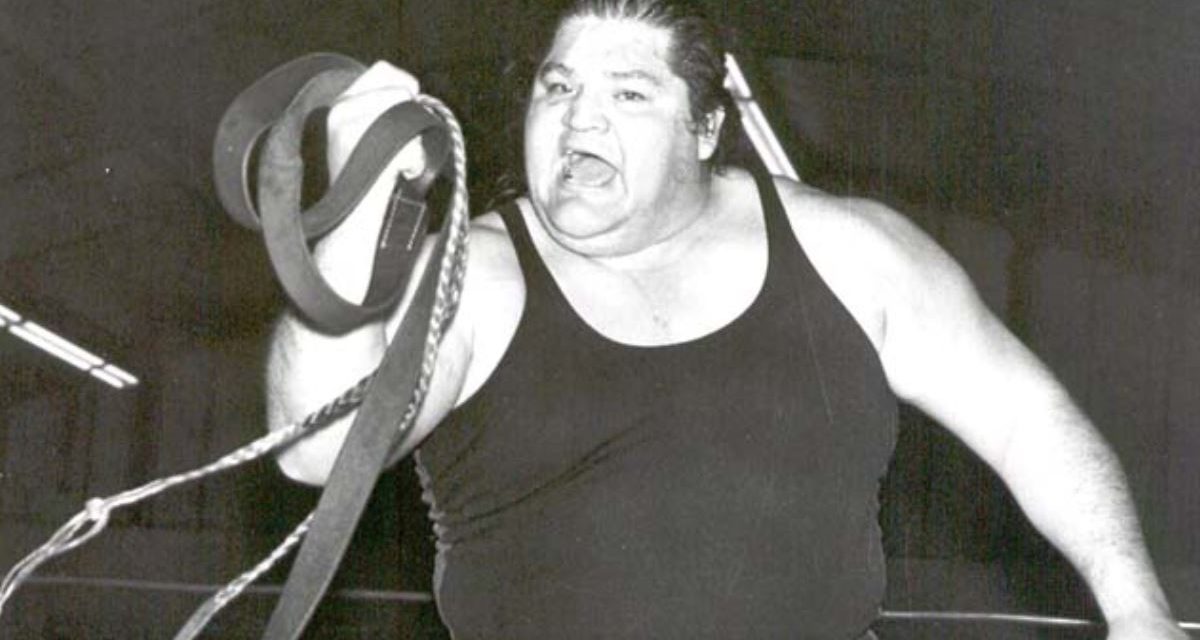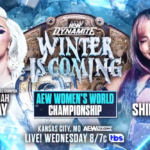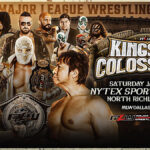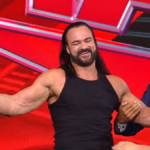Believe it or not, when the giant Bull Ramos started wrestling, he only weighed about 200 pounds. But over time, he grew into a 350-pound monster on his 6-foot frame. However, now at 67, he’s on his way back down in size, and not in a good way.
“My health is bad now. I’m blind and my kidneys are gone. I’m on dialysis Mondays, Wednesdays and Fridays,” Ramos told SLAM! Wrestling recently from his home in the country outside Houston. He’s lost at least 100 pounds as well.
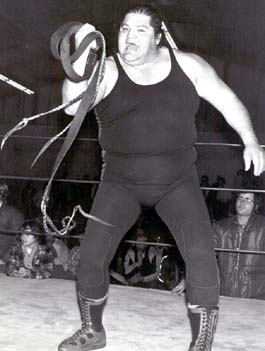
Bull Ramos. Courtesy DutchSavage.com
But “Apache” Bull Ramos is not one to dwell on the negatives. Things are what they are. He hears from his many friends every day, and joked that the last visitors that came by — driving all the way from Wisconsin — he still can’t figure out who they were.
It’s the opposite of his in-ring persona, as hated a man as their ever was in the squared circle.
“I was a heel all the time because the people never liked me,” he recalled. “I was never a babyface.”
Growing up in Houston, Ramos had an uncle that loved wrestling. “We used to go down to the Auditorium in Houston. I remember that the place would get so hot-we were right up top because we were poor and didn’t have no money to buy good tickets-and we’d sit there sweating.”
In the early ’60s, that uncle suggested that Ramos give pro wrestling a try. One day he told me, ‘That’s what ya’ll should do, Bull. Be a wrestler.’ I said, nah. I was boxing at the time. Then one thing led to another and I met a guy named Morris Siegel in Houston, Texas, and a guy named Paul Boesch, who was the promoter.”
Boesch and Sigel got him the entry into the game, but it was “an old man” named David Weinstein who taught him how to perform. “Beautiful wrestler, man. He taught me everything, taught me all the moves to wrestling,” he said. “Nobody knows him but he was a tough bugger.” Ramos also credits Danny McShane and Cyclone Ayala for polishing his skills.
Soon his worldwide odyssey was under way, but with a typical anti-promoter stance from Ramos. “When I started wrestling, they wanted to make me an Italian. They wanted me to wrestle as John Albano. I said, ‘Nah, it’s not going to work,’ he laughed. Instead, he kept his real name.
His growth as a person began with his career as well. “When I started, I was around 200 pounds. Then as I kept going, I’d get bigger and bigger. The bigger I got, the better I used to wrestle and move,” he said. “I weighed 350 pounds at my top peak.”
Ramos wrestled everywhere. “You name it, I went to it.” He toured Japan 15 times, usually Curtis Iaukea, went to Korea five times and spent two years in Australia for Tony Kolonie.
“When I went in to Australia, there were only two Indians before me that went in there,” he said. “When I jumped in the ring, everybody just started yeahing me and throwing me flowers and all this stuff. By the time I finished wrestling that night, everybody wanted to kill me. I had a couple of people have heart attacks that night.”
Again, the promoter wanted to change his persona, this time into a lumberjack. “I said, ‘No sir, if I can’t make it as “Apache” Bull Ramos, I’ll get on a plane and go back to Houston.'”
Ramos went to Australia for six months and stayed two years. “I went down there the first year and I took my wife with me, but she became pregnant and wanted to come back and have the baby in the States. Then I had to go back there to finish up. They took care of her plane ticket, they took care of everything when I was there,” he said. “Tony Kolonie had a good run there. He made a lot of money with us.”
There are a few other places where Ramos made good money. He was a mid-carder in the Mid-Atlantic territory, but on top in Los Angeles, often battling Mil Mascaras at the Olympic. Another foe was Jose Lothario. “That used to be magic, any time I wrestled Jose, things were booming. Mil Mascaras, same thing.”
Jeff Walton, the L.A. territory announcer and publicist remembers the Mascaras-Ramos feud well. It culminated in a Hair vs Mask match, which Ramos lost and had his hair cut off. “The reason I remember it getting over so well was that Ramos had almost unmasked Mil by tearing his mask up in the early match and kept vowing to finally unmask him,” Walton said. “Ramos could speak perfect Spanish as well as English which was a big plus in those days and when on interviews showed pieces of the mask and promised to show the fans what Mil looked like. Ramos was the champion in the early matches. Both men worked very well together as Ramos could work the ‘Lucha Libre’ style as well as the catch-as catch can style along with Mil. Ramos was also a very good ‘seller’ and Mil liked that.”
Ramos also had a short run in the WWWF as one of the never ending series of giant contenders for champion Bruno Sammartino.
“I went in there, picked me up a lot of money and went back,” Ramos said. He was managed by Homer O’Dell. “They wanted me to have Wild Red Berry. I said, ‘No, I made a deal with Homer.'”
In fact, Ramos was one of the few wrestlers who can say that they worked on the final show at the old Madison Square Garden (January 29, 1968, beating Antonio Pugliese, aka Tony Parisi) and at the first show at the new Madison Square Garden (February 19, 1968, losing to Bruno Sammartino).
The other place that Bull Ramos was on top and made good money was in the Pacific Northwest, especially matched up against Dutch Savage. “I made a LOT of money with Dutch. Dutch and I, any time we met was a sellout,” he said. “any time we came together, people came to see us in Oregon. Then we started going to Washington, and in Washington, the same thing-sellout after sellout.”
Savage and Ramos feuded for five years. “He was a perfect match for me. Anything I wanted, he did, anything he wanted I did,” recalled Dutch Savage. “Bull was the perfect Indian heel … if he isn’t the embodiment of a real Chirakawa Apache Chief, no one on earth is.”
“We really convinced the folks in the front rows as well as the back because we laid the lumber to one another and neither of us ever complained,” Savage continued. “We knew we had the people just where we wanted them, and that was making them want more of Ramos and Savage.”
Ramos would battle with Ricky Hunter in the Pacific Northwest. “Bull, for all his weight and all, he moved like a ballet dancer,” Hunter said in an interview in the Ring Around The Northwest newsletter. “He was so light on his feet, there was nothing clumsy about Bull. … When you were tagged up with Bull, you knew you were going to steal the show.
Yet Ramos recalled being very apprehensive during his initial foray to the Pacific Northwest. “I went in to Oregon and I didn’t know-I drove, and drove, and drove. I thought I was going to the end of the world, you know. So when I got up there, it was trees on one side and water on the other side, and I said, where in the hell am I at? So I was really pissed when I got to Portland. I didn’t think I was going to like it.”
His first match not only settled him down, it firmly established him as a player for years to come.
“Lonnie Mayne made Bull Ramos in Portland, Oregon. The first match I had was with Lonnie Mayne. When I went in there, they had Indians on one side and lumberjack people on the other side. I went in there and broke Lonnie Mayne’s arm … bones were sticking out of his arm. That’s what made Bull Ramos there, I’ll tell you that.”
He stayed for years in the Pacific Northwest because he liked it. “I liked the hunting and fishing. You see, I’m an Indian, and didn’t have no license … I could go kill a deer any time I wanted, I could go fishing any time I wanted.”
Ramos was part of a championship tag team in the Pacific Northwest with the future Minnesota Governor Jesse Ventura. “That son of a bitch. After he went up there, they asked him, where’s Bull Ramos? ‘He’s dead.’ He told them I died,” laughed Ramos. “He’s a real nice guy. All wrestlers were nice.”
By the early 1980s, he was ready to quit wrestling. He called his friend Nick Kozak, a Vancouver wrestler who had settled in Houston for work. Kozak ran a wrecking service, and Ramos wanted to learn. “He taught me the business, then I bought my own wreckers.”
Though he’s tough to the end — “I had trouble with everybody. I didn’t like nobody.” — somehow one knows that “Apache” Bull Ramos meant a lot more to people than that. Otherwise he wouldn’t have so many people calling to wish him well in his current battle.
RELATED LINKS
https://slamwrestling.net/index.php/2006/05/28/apache-bull-ramos-dies/
https://slamwrestling.net/index.php/2006/06/01/adios-mano-dutch-savage-says-goodbye-to-bull-ramos/
